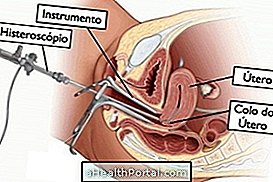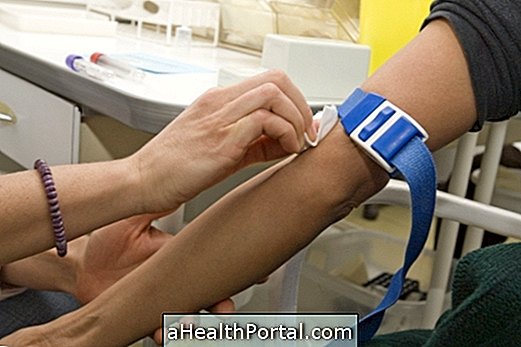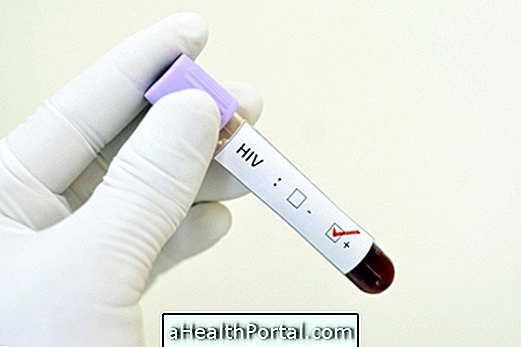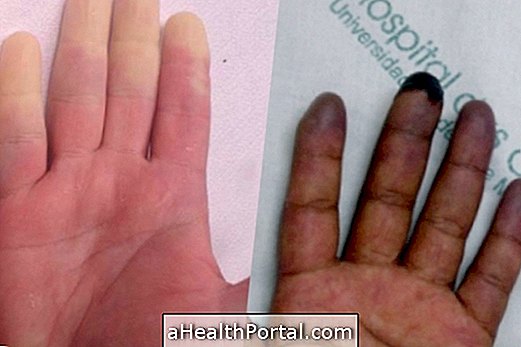The term phlebotomy refers to the incision in a blood vessel of a catheter for the purpose of administering drugs to patients with difficult venous access or to monitor central venous pressure, or even bleeding, which is an old medical practice performed with iron stores or the number of red blood cells, as in hemochromatosis and polycythemia vera, respectively. Learn more about polycythemia vera.
Currently the term phlebotomy is more associated with blood collection for laboratory tests and for donation. Phlebotomy is a delicate procedure and must be performed by a duly trained professional for this function, since any mistake in the collection may alter the results of the exams.

What is it for
Phlebotomy is more commonly used for the purpose of diagnosis, and the collected blood is sent to the laboratory for analysis to assist in the diagnosis and follow-up of the patient. Phlebotomy corresponds to the first stage of diagnosis, and should be performed by a trained professional to avoid changes in results.
In addition to being essential for performing laboratory tests for diagnosis and follow-up of the patient, phlebotomy can be performed as a therapy option, and is then called bleeding. The bleeding is aimed at solving the problems related to the increased number of red blood cells, in the case of polycythemia vera, or large accumulation of iron in the blood, which is what happens in hemochromatosis. Understand hemochromatosis and how to identify the symptoms.
Phlebotomy is also an essential part of the blood donation process, which aims to collect about 450 ml of blood, which goes through a series of processes until it can be used by a person who needs it, helping in its treatment. Learn how the blood transfusion is done.
How is blood collected?
Blood collection can be done in hospitals and laboratories and fasting depends on the type of examination that was requested. Learn more about fasting for blood tests.
The collection can be done with a syringe, in which a total amount of blood is withdrawn and then distributed in the tubes, or the vacuum, which is more common, in which several blood tubes are collected following a pre-established order. The step-by-step collection for laboratory purposes are:
- Collect all necessary equipment for collection, such as the tube in which the blood will be stored, gloves, garrote, cotton or gauze, alcohol, needle or syringe.
- Check the patient's data and identify the tube (s) in which the collection will be performed;
- Position the person's arm under a clean paper or towel;
- With the patient's arm extended, locate a vein of good size that is visible, straight and clear. It is important that the vein is visible without applying the club;
- Then place the club 4 to 5 fingers above the place where the collection will be done and re-examine the vein;
- With your hand properly sanitized, put on the gloves and disinfect the place where the needle will be placed. The disinfection should be done with alcohol at 70%, passing the cotton in a circular motion. After disinfection, do not touch the area or run your finger over the vein. If this happens, it is necessary to do new disinfection;
- To collect, you should ask the patient to close and open their hands to evidence the veins. Then, penetrate the vein at a 30º angle and collect.
- As soon as the collection begins, loosen the tourniquet and remove it before removing the needle;
- The needle should be gently removed and then light pressure should be applied to the collection site or a clean gauze or cotton and request that the patient remain with the arm extended to avoid bruising.
After collection, it is important to discard the material used for the disposal of sharp-cutting devices and not to re-cap the needle, as there is a risk of accidents. It is important that the collection be done following a predetermined order by the laboratory to avoid cross-contamination between the additives present in the tubes.
In the case of collection performed on infants, the blood is usually withdrawn by digital or heel puncture and, more rarely, by perforation of the earlobe.
























